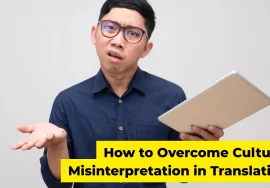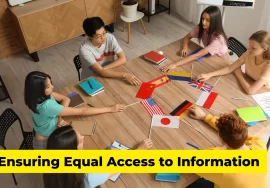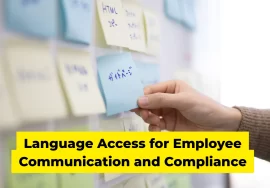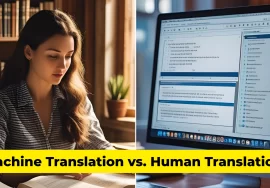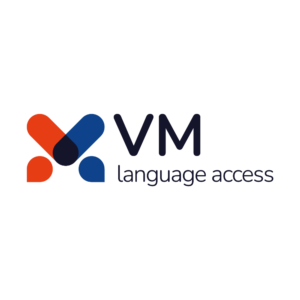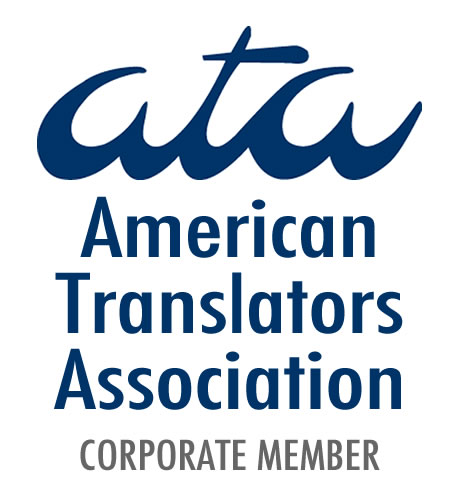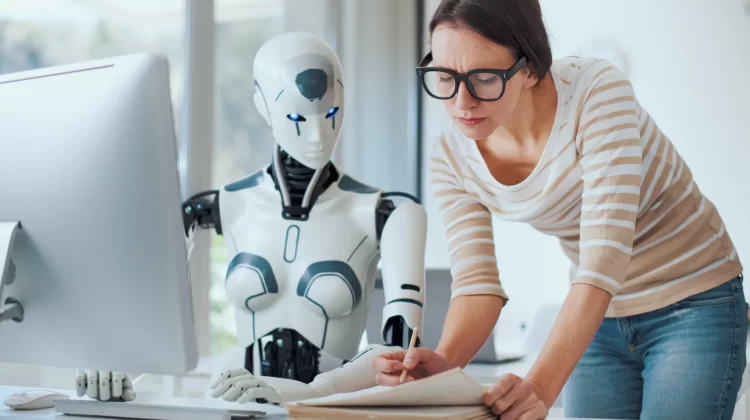
The Future of Human Translation: Can Humans and AI Work Together?
As artificial intelligence (AI) technology continues to develop, it’s reshaping countless industries. One area that’s been significantly impacted is the translation industry. For years, translation professionals have been curious about the potential of AI in their field. Many are left wondering, “Will AI replace translators?” The future of human translation is a hot topic, especially as AI-powered tools like Google Translate and DeepL become increasingly sophisticated. However, while AI is certainly transforming the landscape of translation, it’s unlikely that it will completely replace human translators anytime soon.
In fact, the future of human translation may be brighter than ever, but it will require humans and AI to work together in ways that maximize both their strengths. This article will explore how AI is shaping the translation industry, why human translators are still indispensable, and how the two can collaborate to improve translation processes for the future.
The Current Role of AI in Translation
Artificial intelligence has already made its mark in the translation industry. AI-powered tools, such as Google Translate, DeepL, and Microsoft Translator, have become everyday resources for both personal and professional translation needs. These tools rely on machine learning and neural machine translation (NMT) systems, which are designed to learn from vast amounts of bilingual data and adapt to different language patterns over time.
These AI systems are powerful, fast, and cost-effective, making them particularly useful for general translations, such as translating social media posts, websites, or basic communications. For instance, they can be used to translate a simple email or a piece of text on the fly, providing quick results that can be useful for many tasks.
However, while AI translation tools can handle a wide range of general content, their ability to capture context, tone, and the intricacies of language is still limited. This is where human translators come in. While AI can process vast amounts of text, it still struggles with understanding the subtle nuances that are essential to accurate translation. For example, idiomatic expressions, humor, and cultural references are often lost in AI translations. These challenges illustrate why, despite the rapid rise of AI in the field, human translators remain essential.
Why Human Translators are Still Needed
While AI continues to improve, it’s not ready to fully replace human translators, particularly when it comes to high-quality, specialized, and culturally sensitive work. There are several key reasons for this:
1. Context and Nuance
Translation is not just about converting words from one language to another. It’s about conveying meaning, context, and the subtleties that come with language. Human translators excel at capturing these nuances. For instance, a simple word might have several meanings depending on the context in which it’s used. AI can struggle to accurately interpret these subtleties, leading to awkward or inaccurate translations.
Furthermore, language is deeply tied to culture, and understanding the cultural context of a text is crucial to delivering a quality translation. For example, humor, idiomatic expressions, and cultural references often don’t translate directly from one language to another. Human translators can navigate these intricacies with ease, adapting the translation so that it resonates with the target audience while maintaining the integrity of the original message.
2. Specialized Knowledge
Certain translation fields—such as legal, medical, and technical translation—require specific expertise that goes beyond language fluency. In these fields, accurate and precise language is critical. A misstep in a legal translation, for instance, could have serious consequences. Similarly, medical documents require a deep understanding of medical terminology to ensure that the translation is accurate and clear.
While AI can assist with these specialized areas, human translators with the relevant knowledge are still essential. They bring a level of precision and expertise that AI tools simply cannot match, especially when it comes to interpreting highly technical or specialized documents.
3. Creativity and Cultural Sensitivity
Some types of translation, such as literary translation or marketing materials, require creativity and cultural sensitivity. For example, translating a novel, poem, or advertising campaign involves more than just accuracy—it requires an understanding of tone, style, and emotion. A human translator can inject creativity into the translation, ensuring that it resonates with the target audience and retains the original’s emotional impact.
AI, on the other hand, doesn’t have the capacity for creativity in the same way a human does. While it can generate translations based on data, it lacks the emotional intelligence to convey complex feelings and artistic expressions. Similarly, cultural sensitivity is key in translation—what works in one language or culture may not work in another. Human translators are able to navigate these cultural differences, ensuring that the translation is both effective and respectful.
4. Quality Control
AI-powered translation tools, such as machine translation engines, may produce an initial translation quickly, but these translations still need to be reviewed and refined by a human translator. AI-generated translations can sometimes miss the mark, especially in complex or nuanced texts. In these cases, human translators act as the quality control agents, ensuring that the final product is accurate, polished, and culturally appropriate.
Human post-editing of AI-generated translations is becoming a common practice in the translation industry. Translators often review and refine AI translations, correcting any mistakes and adjusting the tone, style, and meaning to ensure the translation meets the required standards. This process allows AI tools to complement human expertise, improving efficiency and speeding up the overall translation workflow.
Can Humans and AI Work Together?
Rather than seeing AI as a threat to human translators, it’s more productive to view AI as a tool that can enhance the translation process. The future of translation is not about AI replacing humans, but rather about humans and AI working together in harmony. There are several ways that AI and human translators can collaborate to improve the overall translation process:
1. Machine Translation Post-Editing (MTPE)
One of the most effective ways humans and AI can collaborate is through machine translation post-editing (MTPE). In this process, AI provides a first draft of the translation, and human translators review and edit the text to ensure accuracy, fluency, and cultural appropriateness. MTPE allows human translators to work more efficiently by automating the initial translation step, freeing them up to focus on improving the quality of the output.
As AI tools continue to improve, the role of MTPE is likely to expand. Human translators will be able to use AI as a tool for quickly processing large amounts of text, while still ensuring that the translation meets the high standards required for professional work.
2. AI-Assisted Translation Tools
There are already several AI-assisted translation tools available that can help human translators work faster and more accurately. These tools use AI to suggest translations, provide context, and even detect errors in real-time. For example, translation memory tools help translators reuse previously translated content, ensuring consistency across documents and reducing the time spent on repetitive tasks.
As AI technology evolves, it will likely provide even more support for human translators, such as real-time suggestions for better phrasing, tone adjustments, or context-specific translations. This will enable human translators to focus on the more complex aspects of translation while AI takes care of the more mechanical tasks.
3. Specialized AI Training
In the future, AI tools will likely be tailored to specific translation niches, allowing translators to work more efficiently in specialized fields. For instance, AI tools designed specifically for legal or medical translation could assist translators by offering suggestions based on industry-specific terminology and context. These AI tools would be a valuable resource for human translators, enabling them to produce high-quality translations while maintaining accuracy and consistency.
Human translators, in turn, can provide feedback and training to these AI systems, helping them improve their performance in specialized areas. This collaboration will ensure that AI tools are not just general-purpose but are capable of handling the unique demands of different translation sectors.
The Future of Human Translation: Embracing Change
The translation industry is undeniably evolving, and AI is playing a pivotal role in that transformation. However, human translators will continue to be essential to the process, particularly in specialized, creative, and culturally sensitive translation tasks. As AI becomes more integrated into the translation workflow, human translators will find new ways to collaborate with these technologies, improving efficiency, accuracy, and quality.
Rather than fearing that AI will replace them, translators should embrace these technological advancements and learn to work alongside AI tools. The future of human translation isn’t about competition—it’s about collaboration. By leveraging AI to handle repetitive tasks, human translators can focus on the creative and specialized aspects of translation that require a human touch. This collaboration will allow translators to stay relevant and thrive in an AI-powered world.
In conclusion, the future of human translation is one where humans and AI work together to provide faster, more accurate, and culturally appropriate translations. AI will never fully replace the human element of translation, but by embracing the technology, human translators can enhance their work and ensure that they remain indispensable in the ever-evolving translation landscape. The question of will AI replace translators is not about AI taking over, but about how humans and AI can work together to build a more efficient and effective translation industry.
At VM Language Access, we understand that the future of translation is not just about technology; it’s about people. By combining cutting-edge AI tools with human expertise, we offer the best of both worlds—ensuring high-quality translations that are accurate, culturally sensitive, and tailored to meet the unique needs of our clients. Contact us today to learn how we can help you navigate the future of translation with confidence.

